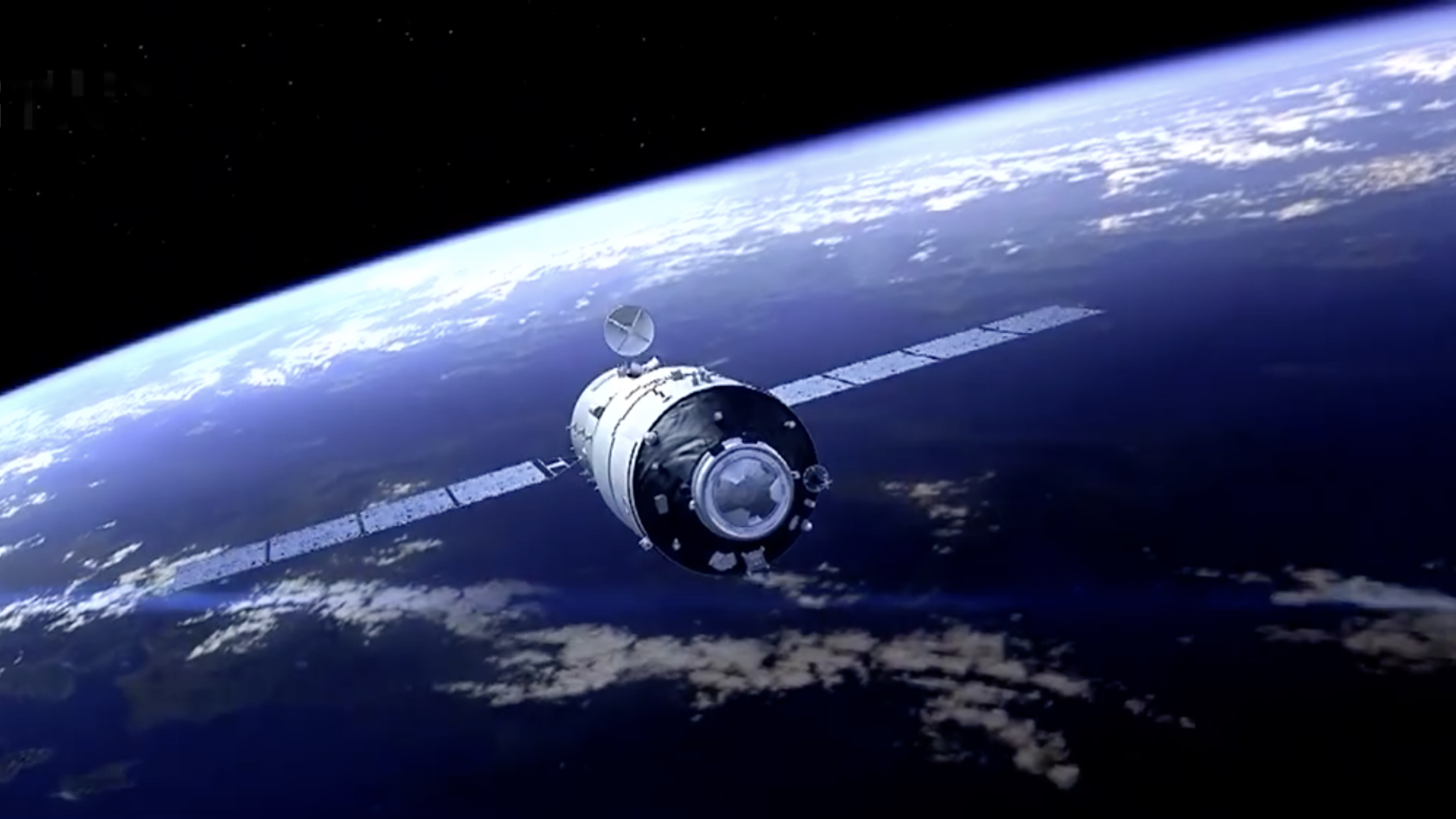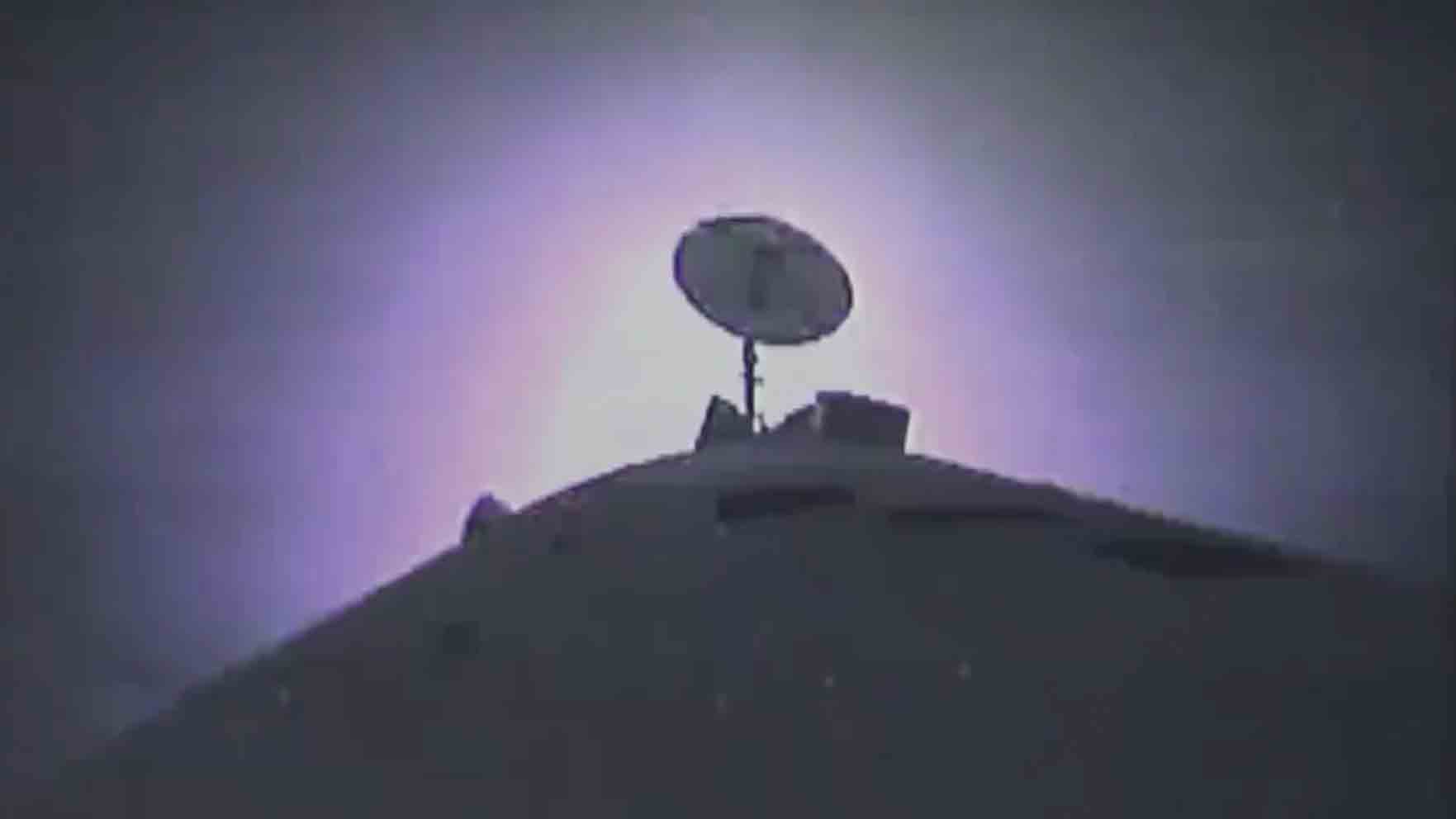

China's space lab Tiangong-2 made a controlled re-entrance to the Earth's atmosphere at around 21:06 BJT (1306 GMT) on Friday, according to China's Manned Space Engineering Office.
A small amount of debris splashed down in the safe sea area in the remote South Pacific.
The re-entry marks the successful completion of all tasks in the space laboratory phase of China's manned space engineering.

Tiangong-2 space laboratory was launched into orbit on September 15, 2016.
It has been in service for over 1,000 days, 300 days more than its intended lifespan.
"Even though the Tiangong-2 is in over-service, all of its functions and applications are in good condition," said Zhu Congpeng of China Aerospace Science and Technology Corporation, who was also chief designer of the Tiangong-2 Space Lab. "However, considering the safety and reliability of Tiangong-2 in orbit, we are taking the initiative to de-orbit it."

CGTN Photo
The re-entry process is divided into two phases. First, The Tiangong-2 lowered its orbit to an elliptical orbit with the perigee of 200 kilometers on July 18. And in the second phase, it lowered its orbit to 70 kilometers and entered the atmosphere.
"We have mobilized all of the space-based and ground-based measurement and control resources, and the relay satellites, to ensure Tiangong 2's re-entry process has a comprehensive and reliable measurement and control support," said Wang Saijin, deputy chief engineer of Beijing Aerospace Control Center (BACC).
Achievements
Since Tiangong-2 Space Laboratory was launched into orbit on September 15, 2016, it has completed four rendezvous with the Shenzhou XI manned spacecraft and Tianzhou 1 cargo spacecraft. It has also successfully supported two astronauts in orbit work-life for 30 days, making breakthroughs in a series of key technologies such as the astronaut's medium-term residence and adding propellant in orbit.
"The medium-term stay for astronauts in Tiangong-2 has laid a solid foundation for our long-term residence of space station missions in the future," said Yang Liwei, China's first astronaut.
The Tiangong-2 is designed to serve in orbit for two years. Since 2018, it has completed a number of expansion tests, which according to the CMSEO, has accumulated important experience for the development and construction of China's space station and operational management.
Tiangong-2 carried a total load of about 600 kilograms of material from 14 applications, as well as space medical experimental equipment and in-orbit maintenance and test equipment. It carried out more than 60 space science experiments and technical experiments.
Among them, Tiangong-2 carried the first cold atomic clock into orbit. The Gamma-ray Burst Polari meter, POLAR, jointly-developed by China and Europe, has detected 55 cases of cosmic gamma storms, making important contributions to international gamma storm detection.
In addition, Tiangong-2 is also home to space silkworms, double swing experiments, water film reactions and three award-winning experimental projects designed by Hong Kong high school students.
(CGTN's Ning Hong, Gong Zhe, Guo Meiping and Cao Qingqing contributed to the story.)

Copyright © 2018 CGTN. Beijing ICP prepared NO.16065310-3
Copyright © 2018 CGTN. Beijing ICP prepared NO.16065310-3